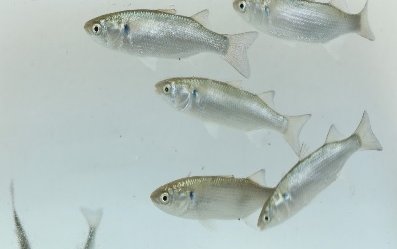The inclusion of sustained-release androgen-gonadotrophin releasing hormone analog implants into fertility treatment regimes of male and female milkfish has been proposed to benefit artificial maturation outcomes.
Researchers from ICAR-CIBA, together with WorldFish, evaluated the co-administration of the androgen, 17α –methyl testosterone (17 α–MT) in combination with gonadotropin-releasing hormone analog (GnRHa) as a single hormone pellet at varied frequencies in male and female milkfish and its effect on maturation, egg quality, spawning and subsequent larval fitness. Cholesterol pellets combined with GnRHa and 17 α–MT in equal amounts were found superior to individual treatment in terms of breeding responses, in a trial in 2015.
In a second trial from 2016–2019, researchers assessed the effectiveness of chronic (10 implantations/year- December, January–September) and assisted (4 implantations/year- Dec, Jan, April, July) implantation of combined hormone pellets to compare breeding responses during trimester of implantation/breeding period divided as early (January–March), maximum (April–June) and extended (July–September) phase.
Researchers found that assisted hormone implantation helped to achieve the desired percentage of unimodal distribution of mature oocytes (650–750 μm) reaching the final oocyte maturation (FOM) stage in milkfish along with higher spawning frequency. On the contrary, chronic implantation caused an increased percentage of vitellogenic oocytes with bimodal distribution (250–500 μm and 500–600 μm) in the ovary with reduced spawning events.
The application of combined hormone implants, both assisted and chronic, facilitated the sustained release of both GnRHa and 17 α – MT together and thereby inducing the entire reproductive axis resulting in extended spawning frequency for seven months (February–September). Researchers also found that milkfish breeding was aligned with abiotic factors such as higher water temperature and salinity along with synchrony to full moon or new moon.
“We conclude that the assisted type of implantation pattern significantly improves maturation, milting male percentage, average fecundity, egg diameter, fertilization rate, hatching rate and larval length compared to that of chronic implantation, with the added benefit of reduced handling stress,” researchers said.
This study represents the first report of milkfish captive maturation and hatchery seed production in tropical climate using combined hormone pellet administration. Check out the study here.













